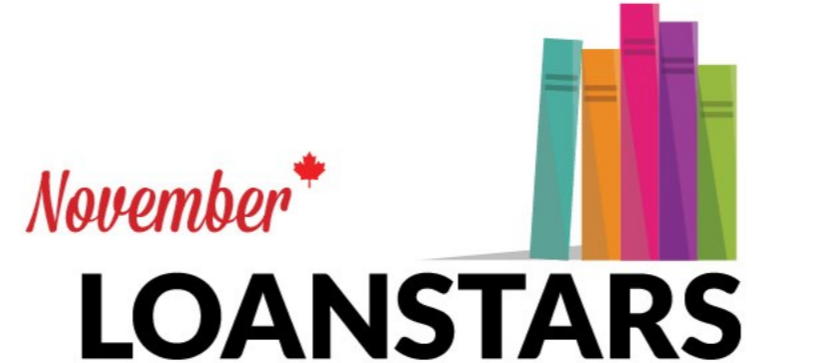It’s no secret that we at BookNet are major fans of the Thema subject classification system. While we still love BISAC, the dominant subject classification system in the North American book market, the love for Thema is real. Even though BISAC has made recent adjustments to its codelist to meet market demand for more granular coverage of diverse content, such as the inclusion of Own Voices subject categories in the Fiction and Young Adult categories, BISAC is intrinsically challenged due to its structure. Thema, with its qualifier lists, can better handle diversity matters such as intersectionality in a way that BISAC isn’t capable of.
Quite simply put: when used correctly, Thema can communicate more granular and specific information about a book’s content that allows data senders and data recipients to share and display information about a book that represents a more diverse and inclusive range of content ripe for discovery by a marketplace that demands it.
Thema is overseen by EDItEUR, the international standards organization that also oversees the ONIX for Books metadata standard. When we hosted EDItEUR’s Chris Saynor at Tech Forum 2020, he shared some tips and tricks to reinforce what we already knew: Thema is far better equipped to support sharing diversity information than anything yet put forth in the market.
New to Thema? Learn more about the basics below.
Thema: real life examples
In 2020, EDItEUR released a comprehensive report on how to use Thema to communicate what we’ll call “diversity” attributes about a book. This was followed by what EDItEUR refers to as “worked examples,” where EDItEUR took real books in the market and made suggestions as to what specific Thema subject categories and qualifiers could be assigned to describe the book’s content. In this post, we have republished these examples to show how flexible and adaptive Thema is, and to illustrate the effectiveness it offers as a solution to communicate so-called “diversity” attributes about the book's content.
Note: they don’t necessarily represent the actual codes chosen by the publishers, they’re meant to stimulate discussion and reflection rather than being authoritative statements of the correct way to categorize the particular books listed.
Where possible, we’ve complemented EDItEUR’s examples with Canadian titles and categorized them accordingly. The same caveats apply and are worth repeating: the BookNet-selected codes don’t necessarily represent the actual codes chosen by the publishers, they’re meant to stimulate discussion and reflection rather than being authoritative statements of the correct way to categorize the particular books listed.
Example: Under my Hijab by Hena Khan, Illus. by Aaliya Jaleel from Lee & Low Books
Theoretical Thema subject categorization:
YBCS – Picture storybooks
YNRP – Children’s / Teenage general interest: Islam
YNMF - Children’s / Teenage general interest: Girls and women
Accompanying qualifiers:
5AD - Interest age: from c 4 years old
5PGP – Relating to Islamic / Muslim people and groups
Rationale:
This title explores the lives of Muslim girls and women and contemporary Muslim culture and faith. As a title where the pictures are as important to the story as the text, the main subject category should be “YBCS – Picture storybooks”.
The two major themes of this storybook are girls and being a Muslim and these can be expressed by using the Thema categories “YNRP – Children’s / Teenage general interest: Islam” and “YNMF - Children’s / Teenage general interest: Girls and women”. These two categories highlight the main subjects of the book but the qualifier “5PGP – Relating to Islamic / Muslim people and groups” is also important. These qualifiers, which are not just for children’s books, are to flag that the content features material of interest to or relating to this particular group. It’s not an audience code as such but is another way of indicating content that might be of interest to someone looking for material about that group but not necessarily from that group. As with all qualifiers, the fact that they can be used with different subject categories and across age groups, if appropriate, means it's much easier to search for and discover related titles across a broad selection of relevant titles that can then also be filtered down using other categories or qualifiers, such as all titles that use the 5PGP qualifier, that are aimed at children from 4 to 6 years old and are storybooks.
The qualifiers for religious groups are meant to highlight titles outside the actual religion categories themselves, to broaden the range and diversity of titles that can be discovered when looking at titles that may be of interest to those from the group or who want to understand or learn more about different aspects of that religious group.
Canadian market example: Ramadan: The Holy Month of Fasting by Ausma Zehanat Khan from Orca Book Publishers
Publisher-provided keywords:
Eid; Family; Fasting; History of Ramadan; Holy Month; Islamic Beliefs; Muslim Prayer; Quran; Family Traditions; Festivals; CeremoniesCommunity; Cultural Celebration; Cultural Differences; Cultural Diversity; Cultural Empathy; Cultural Studies; Cultural Traditions; Culture; Food; History; Diversity; BIPOC; own voice; #ownvoices; History of Holidays; Holiday; Holiday Ritual; Recipes; Religious Studies; Social Studies; Traditions; Islam; Islamic Celebrations; Modern Ramadan Celebrations; Muslim Faith; Religious Beliefs; Religious Practice; Celebration
Publisher-provided BISAC subjects:
Main subject: JUVENILE NONFICTION / Religion / Islam
JUVENILE NONFICTION / Holidays & Celebrations / Other, Religious
Theoretical Thema subject categorization:
Main subject: YNRP - Children’s / Teenage general interest: Islam
YNMD - Children’s / Teenage general interest: Celebrations, holidays, festivals and special events
QRVP4 - Fasting and abstinence
YXPB - Children’s / Teenage personal and social topics: Prejudice and intolerance
Accompanying qualifiers:
5HPK - Ramadan
5PGP - Relating to Islamic / Muslim people and groups
5AD - Interest age: from c 4 years
Rationale:
In case you didn’t know, Thema not only supports a parallel code to BISAC’s “Celebration…” code, but supports it with a Ramadan-as-holiday specific one: “5HPK - Ramadan”. Thema also carries the “QRVP4 - Fasting and abstinence” code part of the “QR Religion and Beliefs" section, which relates directly to one of the features of the festival: fasting. A note regarding the use of this code: care should be taken when mixing regular and juvenile subjects in Thema — where there’s a choice, don’t mix them. In this case, there’s no equivalent juvenile code and since the publisher chose to include an interior image featuring a book section on that aspect of the holiday, we’re proposing it as a code.
Does the book deserve a code specific to prejudice and intolerance? That may be a reach on our part, but the book is part of a series intended to address those issues by providing information about different cultures and their celebrations; hence we’re suggesting using the “YXPB - Children’s / Teenage personal and social topics: Prejudice and intolerance” code. We’ll note that such coding is an option in both BISAC and Thema, and the publisher didn’t choose it for BISAC.
Lastly, Thema codes should be supported by an age reference. In this example, the “5AD - Interest age: from c 4 years” qualifier not only grounds the subject, but also qualifies the fasting code as it does the juvenile subjects. However, the Thema age qualifier doesn’t change the need to support Audience Range information in ONIX where the inclusion of a narrow range provides additional audience specific information.
In short, what our diversity breakout is intended to highlight is the differences between supplying a retailer’s market grouping (BISAC) vs. supporting a general category with additional greater specificity (Thema). While keyword entries may provide that specificity, retailers building a database search will prefer a subject code list over a keyword list, making the Ramadan and fasting Thema codes more valuable to search than the equivalent information in keywords.
Want more worked examples?
To read more examples as they’re posted, subscribe to our weekly eNews or nab the RSS feed for our blog.
Thema: the basics
A truly global classification system, Thema is designed to support international trading and is a flexible standard that allows each market to retain its unique cultural voice while still presenting a unified hierarchy that rationalizes book categorization. The goal of Thema is to reduce confusion about subject codes for both upstream and downstream trading partners in order to facilitate the sale of more books. It’s robust: built for use by, quite literally, the whole world. It was initially crafted by a diverse group that included national representatives from Australia, Austria, Canada (French & English), France, Germany, Italy, Netherlands, Norway, Pan Arab Group, South Africa, Spain, Sweden, Switzerland, the United Kingdom, and the United States.
Akin to BISAC, Thema includes a list of standard subject categories, which can be reviewed online here. The distinction is that each subject may be supported by qualifiers. According to EDItEUR’s documentation, “the Qualifiers are a key feature of the Thema scheme structure and provide great flexibility, enabling the expression of a vast range of subjects with a comparatively small number of values.” The combination of a pitch-perfect subject category and the specification of a qualifier allow data senders to provide a more complex, and complete, picture of the product for data recipients.
Qualifier list
The qualifiers available to data senders to choose from are from the following six lists (again, refer to the detailed subject heading and qualifier lists here).
Geography / Place
Used for indicating the geographical scope and applicability of the content, such as the location of a travel guide, the setting of a novel, the jurisdiction to which laws apply, the history of a particular place, etc.
Do not use to indicate any geographical aspect that isn’t related to the content or subject of a book, e.g. place of publication, market availability, nationality of author – this is described in other metadata, etc.
Language as Subject
Used for indicating the language(s) to which the book content applies, i.e. the language the book is about, not the language the book is written in, as this is explained and communicated in other ways through product metadata. For example: a linguistics or literary studies work, a method for learning a language, a phrasebook, or a dictionary.
Do not use the code by itself: you must select appropriate specific qualifiers from the language as subject list.
Time Period
Used for indicating the time period range of a works content, such as the period covered by an art book, a history book, a memoir or biography, historical fiction, a Children’s history book, etc. Used in conjunction with the geography / place qualifier list.
Do not use to indicate a publishing year or specific named date in the title of a book, as this is explained and communicated in other ways through product metadata. Don’t use the code by itself: you must select appropriate specific qualifiers from the time period list.
Educational Purpose
Used for indicating the curriculum, examination or level for which educational material is specifically designed, such as school textbooks, language learning coursework, study aids, revision material, vocational training material, etc.
Do not use to indicate the name of an educational institution that is the book’s subject, this is explained and communicated in other ways through product metadata. Don’t use the code by itself: you must select appropriate specific qualifiers from the educational purpose list.
Interest Age & Special Interest
Used for indicating characteristics relating to the main content of the particular work, such as ages and age groups, holidays & events, etc. 5A* age codes are used to qualify Y* codes and 5H* codes to indicate content about a particular holiday or event, and specific grouping of people.
Do not use the code by itself: you must select appropriate specific qualifiers from the interest age & special interest list. Do not use as a means to target a specific audience: the qualifier must relate to the book’s content itself.
Style
Used for indicating the artistic or creative expression covered by the works content, such as art, architecture, fashion, dance, music, literary genres, etc.
Do not use the code by itself: you must select appropriate specific qualifiers from the style list.
Thema: the “golden rules”
According to EDItEUR, a user can’t go wrong when following their six golden rules while assigning subjects using Thema:
1. Ensure the first category is the primary subject
2. Classify as precisely as appropriate — not necessarily as precisely as possible
3. Assign as many categories as required
4. Observe the usage notes for each category
5. Add qualifiers wherever appropriate
6. Consider context — view the subject within the context of the subject hierarchy
When in doubt, use EDItEUR’s extensive documentation as your compass towards metadata success. If you’re finding yourself stuck, don’t hesitate to get in touch with the BookNet’s metadata experts. And if you want to take your book standards learning even further, watch this Tech Forum presentation by Tom Richardson, BookNet Canada’s Bibliographic Manager, in which he shares what’s new, what’s important, and what’s coming up in the standards community.
















The latest news out of the European Commission.